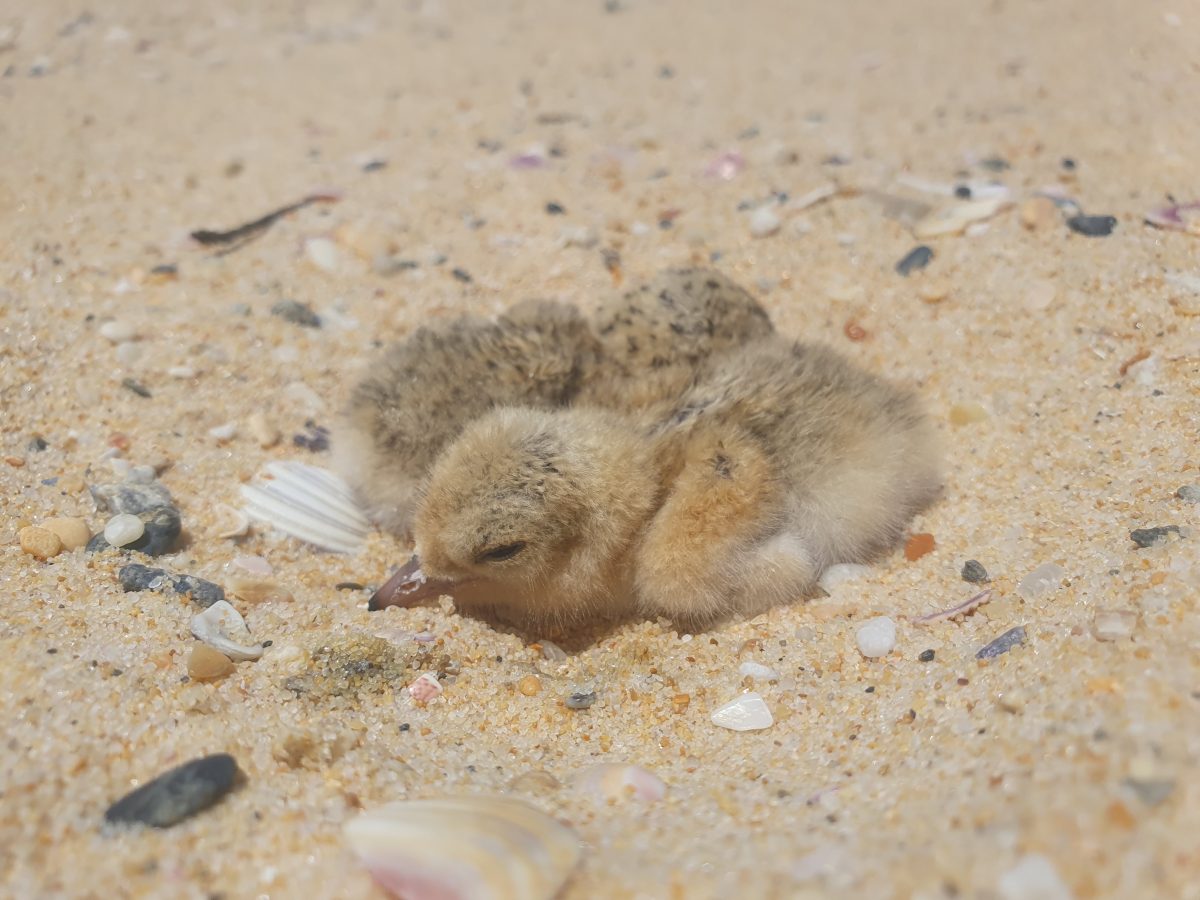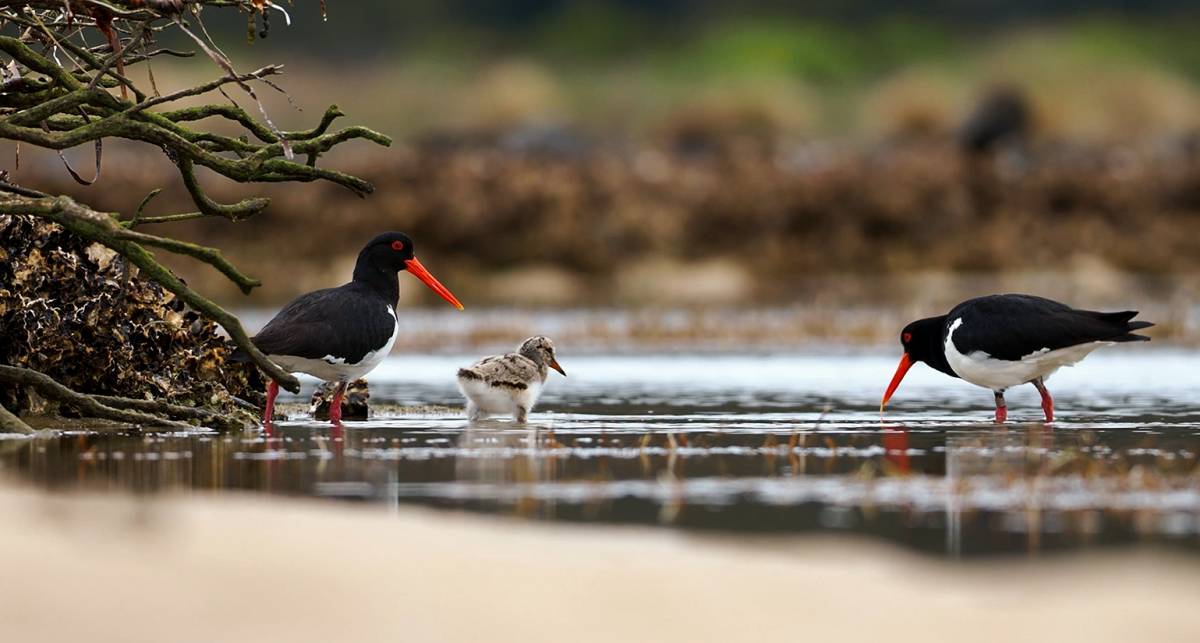
Little Tern chicks can be hard to see in the sand along the South Coast’s beaches. Photo: NPWS.
If you’re heading to a South Coast beach this summer, make sure you watch your step as you walk across the sand.
Sand-coloured chicks could be nestling in the dunes along South Coast beaches, with breeding season in full swing for endangered Little Terns and Pied Oystercatchers, as well as the critically endangered Hooded Plovers.
National Parks and Wildlife Service (NPWS) Shorebird Ranger Kaitlyn O’Brien has urged all beachgoers to keep an eye out for vulnerable young birds, some which are no larger than a Christmas bauble.
“We have already seen Pied Oystercatcher chicks fledge from Wagonga Inlet at Narooma and further south at Disaster Bay,” she said.
“We are currently monitoring nests south of Moruya and near Tanja, as well as several chicks along the coast.”

Pied Oystercatchers with one of their chicks at Wagonga Inlet. Photo: NPWS.
NPWS Shorebird Ranger Anna Mueller is keeping an eye on birds along the coastline between Wollongong and Batemans Bay.
She’s cautiously hopeful for the critically endangered Hooded Plover this season.
“We have already seen five fledglings and are currently keeping an eye on at least three chicks and a further two nests,” Ms Mueller said.
“The range of the Hooded Plover has declined in eastern Australia since European settlement, and on some parts of the NSW coast they are locally extinct, that’s why these sightings down south are so precious.
“Now is the critical time in these endangered birds’ breeding cycle, yet it coincides with peak summer crowds, increasing the risk that eggs and chicks will be trampled or disturbed.”
The best ways beachgoers can help protect these vulnerable bird species include:
- Look out for bird nesting signs or fenced-off areas of the beach
- Walk dogs on designated dog-friendly beaches and keep them on a leash
- Walk on wet sand, as eggs and chicks are well camouflaged and can be accidentally trampled
The birds’ breeding season is expected to run until March 2023.









